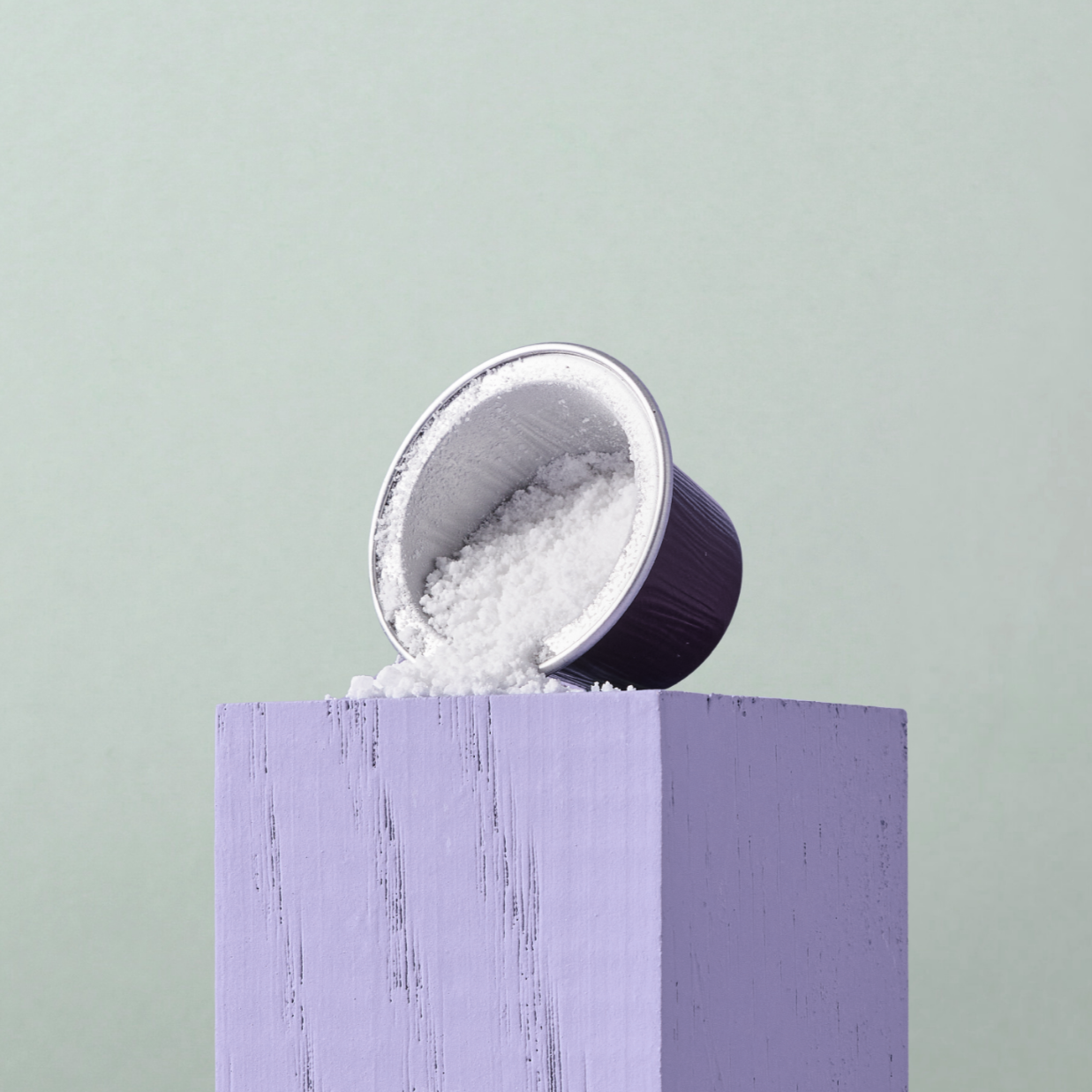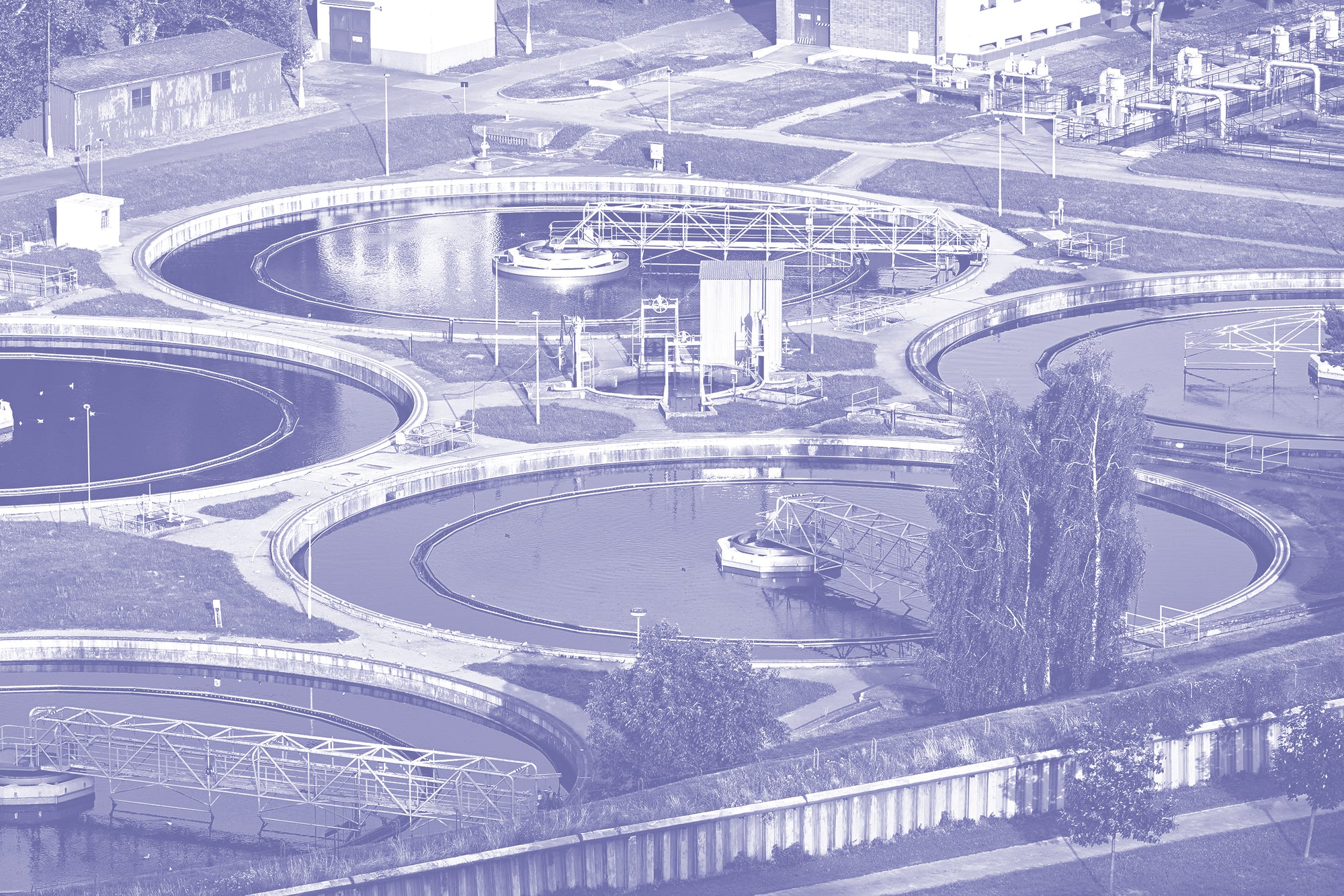
What Exactly is Chlorine Dioxide?
And How Does It Work?
Chlorine dioxide, not to be confused with chlorine, exists as a yellow-green gas at room temperature making it ideal for neutralizing airborne viruses like those responsible for flus and colds. In liquid form, it effectively and safely disinfects surfaces and personal items. It selectively breaks down the proteins in bacteria, viruses, and fungi to eliminate pathogens and odors at the source.
Unlike chlorine, chlorine dioxide produces little to no carcinogenic byproducts, breaking down into chlorite, chlorate, and harmless, metabolizable chloride ions. While chlorite and chlorate can pose health risks, at low and monitored chlorine dioxide concentrations, the levels are well within safety limits!
In the past 10 years, the U.S. FDA reported zero fatalities linked to chlorine dioxide, with only five reversible cases caused by improper oral use. In comparison, OTC pain relievers like aspirin and acetaminophen have caused over 30,000 deaths. From soothing mouth ulcers, athlete’s foot, and insect bites to improving bad breath, unpleasant odors, and indoor air quality, Newgyne® is a reimagined chlorine dioxide powder that’s smart, safe, and does-it-all, carefully formulated just for you, the general consumer. Made to fit any lifestyle, it’s a daily hygiene tool you didn’t know you needed.
This is New Age Comfort®.
Fewer Disinfection Byproducts (DBPs) Than Chlorine or Bleach
From ClO2 to Newgyne®: Science Perfected For Daily Life
At Yvana Hahn®, we recognized the remarkable potential of chlorine dioxide but also its limitations for everyday use. Our team dedicated years of research and innovation to transform this powerful molecule into Newgyne®, our proprietary active ingredient designed for safe, effective, and convenient daily hygiene.
Overcoming Traditional Limitations
Newgyne® retains the oxidative power of ClO₂ while overcoming its traditional challenges through:
Instead of relying on unstable gas, Newgyne® is precisely engineered in solid form, allowing it to dissolve safely and efficiently in water at the moment of use. This ensures maximum potency and freshness while eliminating the risks associated with storing gaseous chlorine dioxide.
Every component used in Newgyne®-containing products is selected from medicinal, food-grade, or cosmetic-grade materials. This means they’re not only safe for human contact but can also be naturally metabolized, minimizing any residual impact on both the body and the environment.
Unlike chlorine, bleach, and many other disinfectants that generate carcinogenic by-products, Newgyne®’s reactions primarily produce chloride ions, a naturally occurring substance also found in table salt, ensuring peace of mind for both health and the environment.
Newgyne® reacts selectively with critical amino acids, especially cysteine and other building blocks of microbial proteins, to swiftly destabilize pathogens. Simultaneously, it breaks down thiol bonds responsible for persistent odors, delivering both disinfection and deodorization in one elegant solution.
Newgyne® is a reflection of a larger philosophy, one that is redefining what it means to be clean without needing to sacrifice your safety for true disinfecting power. It's made to care for you—gentle, safe, and sensory friendly. With Newgyne®, we're keeping our promise to deliver New Age Comfort®.
Newgyne®
Newgyne® is a gentle, but potent chlorine dioxide-based powder specially created by us, for you. We’re bringing industrial cleaning power to the general consumer in a way that’s safe, non-toxic, non-irritating, and non-corrosive.
Newgyne® works by initiating efficient denaturation reactions with specific animo acids, particularly cysteine, a key component of structural proteins, and by doing so, disrupting the 3D structure and biological mechanisms critical to their function. It simultaneously breaks down thiol bonds, which are responsible for persistent and unpleasant odors. The result? A formula that both disinfects and deodorizes, silently, effectively, and gently.

Learn More
Get a deeper understanding by reading about our science in-depth. Continue to view our FAQ, our lab results, research material, and more.
Key Features of ClO2
Effective at killing pathogens
✓ Eliminate viruses (including coronavirus), bacteria (including superbugs), and fungi (mold/mildew) & spores, slime algae, and some parasites
✓ Kill time for a bacterium is on the order of milliseconds
Safe on humans, pets, fish, and livestock
✓ US EPA, CDC, and FDA registered eco-friendly, highly efficacious disinfectant
✓ Non-carcinogenic, non-teratogenic, and non-mutagenic
✓ Non-corrosive to most treated articles and surfaces
Quick removal of odors, allergens, nicotine, biofilms, algae, and organic wastes
✓ Hinder the growth of pathogens in wet environments
✓ Improve air quality for healthier living
✓ Eliminates formaldehyde, allergens, nicotine, and odors from your environment (air, water, object surfaces, etc.)
Local Applications
Please select the tab you would like to learn more about
How It Works:
Contaminated public surfaces or high-touch surfaces that are not cleaned periodically including, but not limited to, doorknobs, railings, gas pumps, elevator buttons, and keypads, typically harbor a variety of microbes and pathogenic material. These are some of the dirtiest common surfaces and some of the fastest ways viruses and bacteria are transmitted. It may not always be possible to avoid high-touch surfaces, so it is important to maintain hygienic practices, especially during an outbreak or pandemic like COVID-19, to prevent the spread of illness.
Using chlorine dioxide for skin sanitization can help to eliminate any harmful pathogens that may have transferred onto the skin or other areas of the body when access to a hand washing station is limited. Its ability to oxidize key amino acids and neutralize bacteria, viruses, and other pathogens at low concentrations makes chlorine dioxide powerfully effective while remaining gentle for humans whose physical structure, in comparison, is not only larger but has much more complex protection systems and repairing mechanisms in place.
At appropriate and monitored concentrations, like Newgyne®, chlorine dioxide does not pose risks to users. Newgyne® is specifically designed to bring chlorine dioxide to the general consumer in a safe and effective way.
How to Use:
- After creating your solution, fill a portable and reusable spray bottle for quick, on-the-go disinfecting after coming in contact with high-touch surfaces.
- Use our wet wipes for easier, and even more convenient disinfecting.
How It Works
Everyday surfaces like kitchen counters, dinner tables, desks, door handles, and mobile phones can hold germs and unpleasant residue invisible to the naked eye. Cleaning these surfaces helps protect health by reducing the transfer of germs and keeps spaces feeling fresh.
Newgyne® works by breaking down key parts of germs, stopping bacteria, viruses, fungi, and biofilm-forming microbes from surviving. Unlike harsh chemicals, it’s gentle, eliminates odors instead of covering them up, and leaves no strong residue, making it perfect for regular cleaning.
How to Use
- Prepare your Newgyne® solution as directed.
- Spray onto surfaces and wipe with a cloth (the cloth will be sanitized in the process), or use a Newgyne® wet wipe.
- Let surfaces sit briefly before wiping or air drying.
- Safe for many materials; test first if unsure.
How It Works
From textiles/laundry to fresh produce, from toothbrushes to razors, “washable” objects of all kinds can harbor exceptional amounts of bacteria and other pathogenic material. Bacteria may survive clothing laundering conditions, and sometimes food items are improperly disinfected and washed of residual chemicals, pesticides, dirt, and pathogens. Toothbrushes and razors, typically found in bathrooms, contain millions of bacteria that moist environments, daily use, and improper cleaning & storage (like near a toilet) may exacerbate.
Chlorine dioxide functions both as a deodorizer and a disinfectant, capable of eliminating lingering, offensive odors and harmful pathogens more effectively than bleach without the production of toxic by-products. It’s less irritating while needing just a small, non-toxic amount of be extremely effective. For produce specifically, chlorine dioxide is an effective secondary disinfectant for making produce safe to eat while further maintaining quality and freshness.
Prepare your solution:
- For laundry items: Dilute your Newgyne® solution with 5 to 10 parts of water then soak the items in the solution for 5 minutes and rinse with water. Please note that chlorine dioxide does have light “bleaching” qualities and may lighten clothes. We recommend using Newgyne® with caution when disinfecting delicate and valuable clothing articles.
- For fresh produce: Dilute your Newgyne® solution with 5 to 10 parts of water then soak the items in the solution for 5 minutes and rinse with water. Pat dry, or leave out to dry, then store properly in the refrigerator. Apply consistently to see reduced spoilage and to consume safer-to-eat produce.
- For toothbrushes & razors: Dilute your Newgyne® solution with 5 to 10 parts of water then soak the items in the solution for 5 minutes and rinse with water. Leave to dry in a dry environment. Apply consistently to reduce the risk of infection.
How It Works:
Whether you’re at home with your family or in a public, high-concentration space like a gym, restaurant, office, airport, or anywhere people gather, having any multiple number of occupants in one space can heavily influence the microbiome of airborne pathogens and create a toxic environment when not maintained. Besides airborne viruses that can spread when sick, natural biological activity like sneezing, coughing, talking, even breathing can discharge aerosolized particles of bacteria and viruses into the air that remain airborne for hours. Any size gathering can pose a risk, especially during flu season, COVID-19 pandemic, or in homes with elderly or immunocompromised people, which is why regular air disinfection is important.
Chlorine dioxide is powerfully effective at removing odors, pathogens, and airborne allergens without producing toxic by-products like typical household cleaning solutions. Instead, it leaves chlorite (a regulated byproduct and safe in low concentrations like Newgyne®) and chloride (as found in table salt). Yvana Hahn products are made for everyday use. They’re gentle enough for routine air disinfection at home, but also effective in contaminated or infectious environments. Whether you’re disinfecting the air in public spaces or just want to experience what a true breath of fresh air feels like, Newgyne® can do it all.
How to Use:
- For easy indoor air disinfection at home, in the office, classroom, bar, restaurant, elevator, car, etc.: Distribute Newgyne® solution in the air 5-10 hours a day (recommended usage) via humidifier (portable or whole house) or use a mist sprayer to distribute as often as needed.
- We recommend the daily usage of 0.5 liters (16 oz) of our solution for every 1,000 ft² of space. Increase usage or mist output accordingly during business meetings or social gatherings.
How It Works:
Just as odors and emissions from outdoors enter the home, our living habits contribute to indoor pollution and household odors. Many of these odors are attributed to VOCs (volatile organic compounds) released during everyday activities like cooking and smoking, the use of personal and household cleaning products, pet and human excretions, air fresheners, cosmetics, paints, and building materials. Spoiling food, garbage, damp towels, dirty clothes, humid environments, etc. that are not regularly cleaned creates a breeding ground for microbes, and by extension, for odorous and unpleasant and musty mVOC (microbial volatile organic compounds) emissions to occur. These mVOCs settle into the carpet, walls, furniture, and other porous surfaces of the home that become more difficult to remove the more they build up.
Heavy exposure to these compounds is not only unpleasant, especially for those with sensitivities, but in more extreme cases can cause irritation to the respiratory tract, exacerbate asthma symptoms, or induce other negative reactions like headache, allergic skin reactions, nausea, etc. Continuous indoor air deodorization with a chlorine dioxide aqueous solution helps to eliminate odors at the source, leaving behind a fresh and neutral scent while simultaneously disinfecting pathogens in the air and on surrounding surfaces.
How to Use:
- Chlorine dioxide can be used as a safe, aqueous solution and sprayed directly onto the affected areas or dispersed into the air (e.g., via a humidifier) for continuous deodorization and diffusion throughout any enclosed space and hard-to-reach, high-humidity areas that are prone to mold growth (HVAC systems) and offensive odors.
How It Works:
Sink, strainers, and drainpipes in kitchens and bathrooms are all moisture-rich environments that open up the opportunity for mold growth and massive biofilm buildup. Over time, soap, food debris, mineral deposits, dead skin, and oil clog and collect in these spaces, becoming breeding grounds for complex and biodiverse communities to thrive. They can also become sources of unpleasant odors.
Regular cleansing and deodorization with chlorine dioxide solution can help to prevent these growths from becoming unmanageable. Chlorine dioxide is a powerful deodorizer and biocide capable of oxidizing molds and their spores and breaking down biofilm matrices to attack harmful pathogens and eliminate odors at their root.
How to Use:
- Pour 2-3 tablespoons (15ml) of Newgyne® solution into the sink and drainpipes to eliminate odors, biofilms, and embedded pathogens every two weeks. If necessary, remove physical debris prior to using the solution. If you notice an odor caused by mold or biofilm growth, increase dosage accordingly. Spray Newgyne® solution on any contaminated surfaces to thoroughly disinfect the area. If you have an overgrowth of mold, seek professional remedial assistance.
How It Works:
Chlorine dioxide as an oral cleanse is as effective as common, established mouthwashes and acts as an oxidizing biocide that removes unpleasant tastes in the mouth, minimizes oral bacteria, reduces volatile sulfur compounds (VSCs) in the mouth, and prevents bad breath, dental plaque, tooth decay, gum disease, and mouth ulcers. If you have oral malodor, like bad morning breath or chronic oral malodor caused by oral diseases and the accumulation of food debris and plaque from poor oral hygiene, using chlorine dioxide to rinse your mouth can provide relief and prevent halitosis development. Chlorine dioxide is effective against oral diseases such as gingivitis (gum inflammation) and periodontitis (gum diseases) as well as oral malodors caused by xerostomia (dryness of the mouth) and wearing dentures.
Chlorine dioxide is also great for those with dental implants who must exercise a strict oral hygiene regimen to prevent the formation of biofilm buildup, which can be hard to access and remove with traditional oral hygiene products, and peri-implant disease.
Prepare Your Solution:
- For oral cleansing: Dilute your 0.03% (300 ppm) Newgyne® solution with 10 parts of filtered water to create a gentle mouthwash. Swish the solution for approximately 20-30 seconds, then spit it out. Use a minimum of 2-3 times a day while brushing your teeth or several times a day for the best results. Use in conjunction with flossing and tongue brushing. DO NOT ingest.
How It Works:
Chlorine dioxide's effectiveness against fungi makes it ideal for treating fungus-infected nails (onychomycosis) and athlete's foot. Our bodies allow the proliferation of these fungi without having an immune response to suppress them, and antifungal compounds typically don't have the capability to penetrate the nail bed to kill the fungus at the source. Onychomycosis, which is a difficult-to-cure fungus infection of the nails that may cause discomfort and disfigurement, is induced primarily by prior development of athlete's foot—when the fungus infects areas between the toes and the skin on your feet. Typical treatments, primarily oral antifungals, take longer to see improvement and may cause several side effects, and traditional topical medications are usually not capable of penetrating the nail and eliminating the fungus. By soaking fungal infected nails in chlorine dioxide solution, chlorine dioxide can penetrate the nail plate and inactivate the pathogens residing in the nailbed, improve the appearance of the nails, destroy the fungal infection, and promote healthy nail growth.
How to Use:
- For fungal infections, onychomycosis, and athlete's foot: dilute your Newgyne® solution with 3 to 4 parts of water, and soak infected hands or feet for 30-45 minutes, 2-3 times a week. After soaking, gently remove any loose, dead skin or cuticles from the infected area for deeper layer treatment in subsequent applications. Improvements may be visible after the first treatment.
A High Efficacy & Safe Disinfectant Recommended by
Extra, extra! Read all about it!
Scientific journals, articles, and more resources to check out regarding chlorine dioxide & the latest developments in ClO2 knowledge and research as well as current nationwide health updates:













